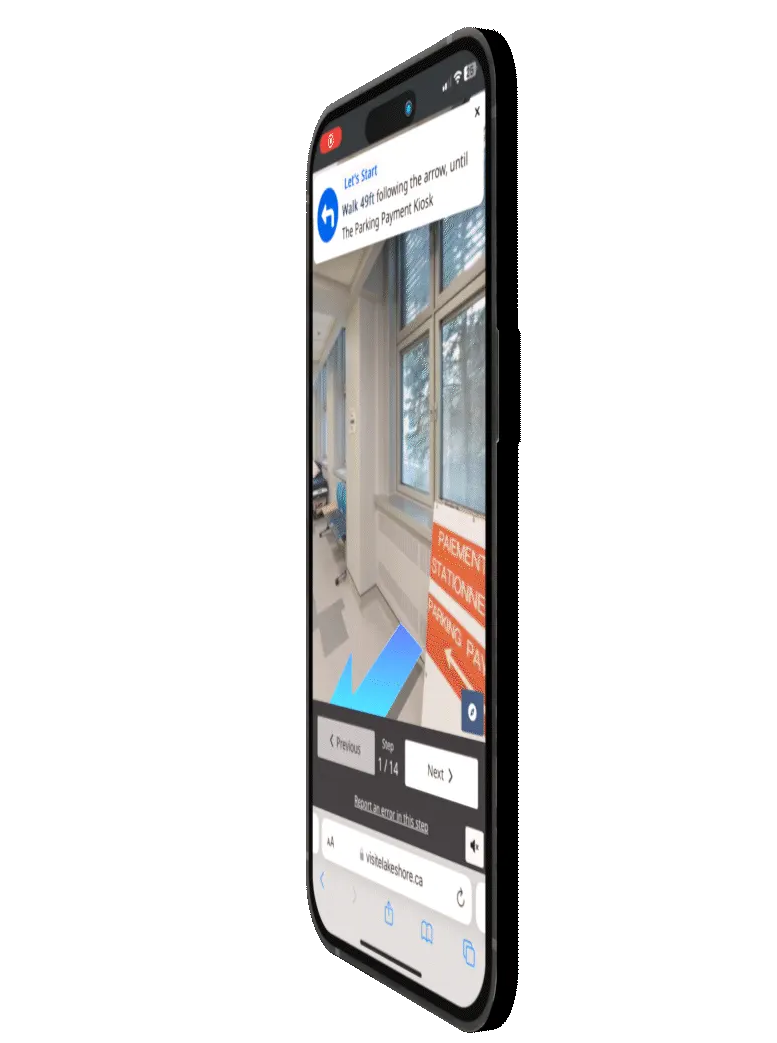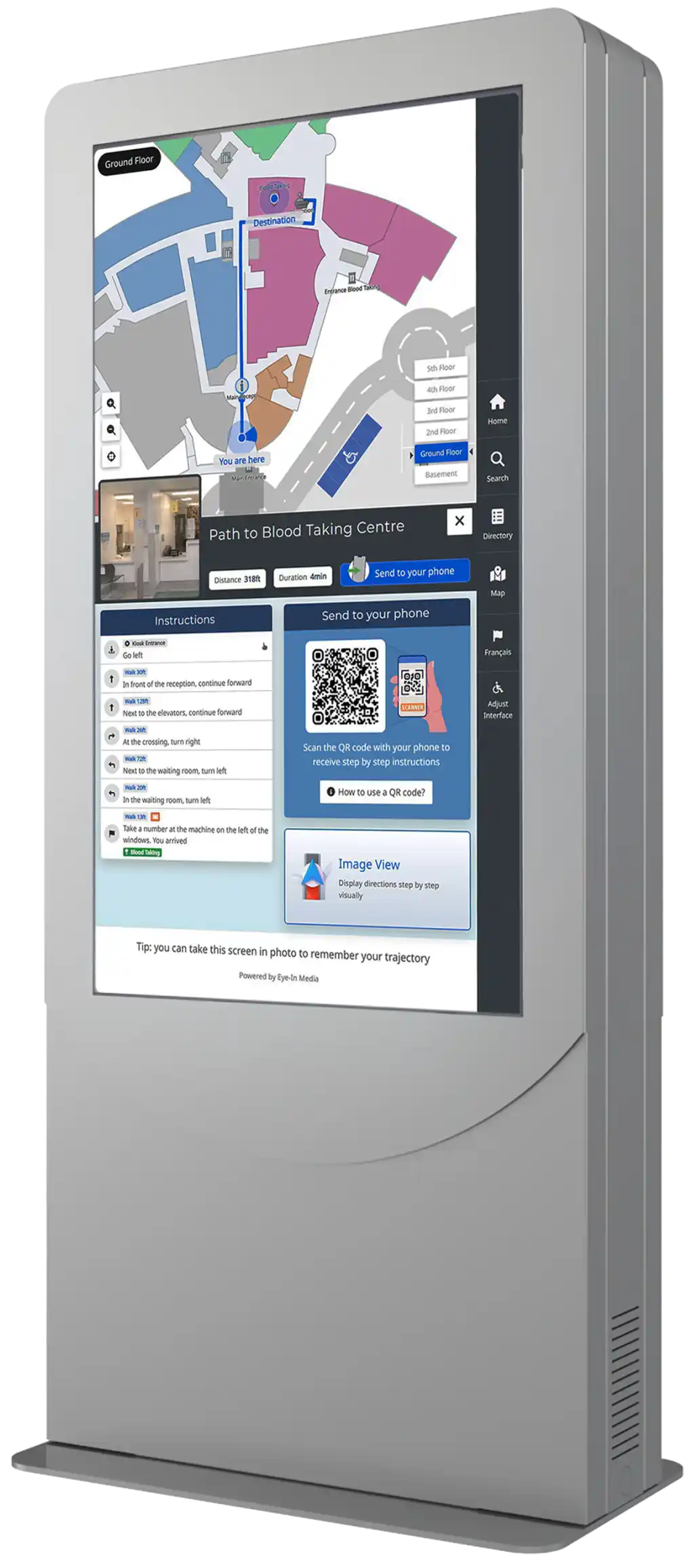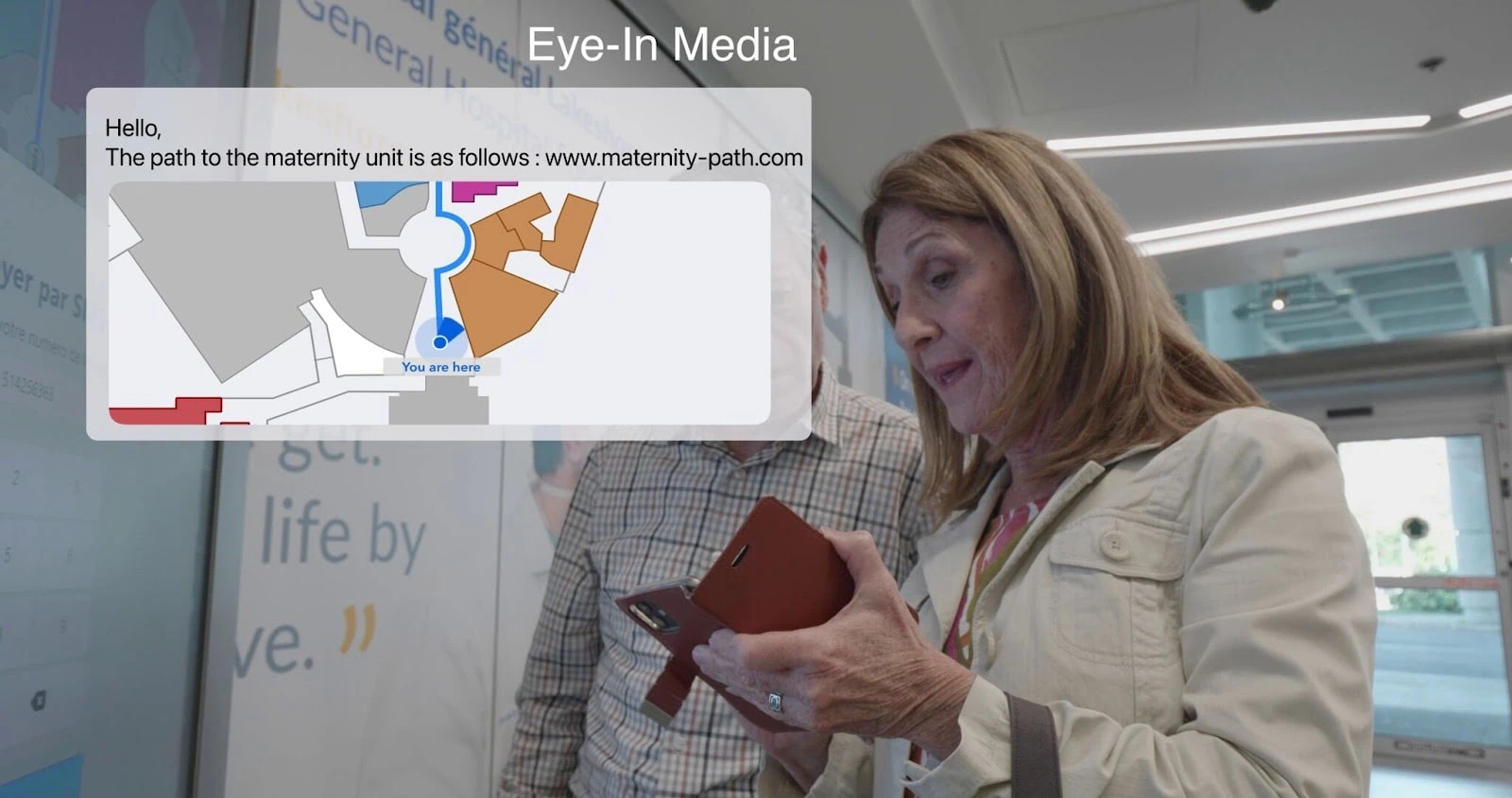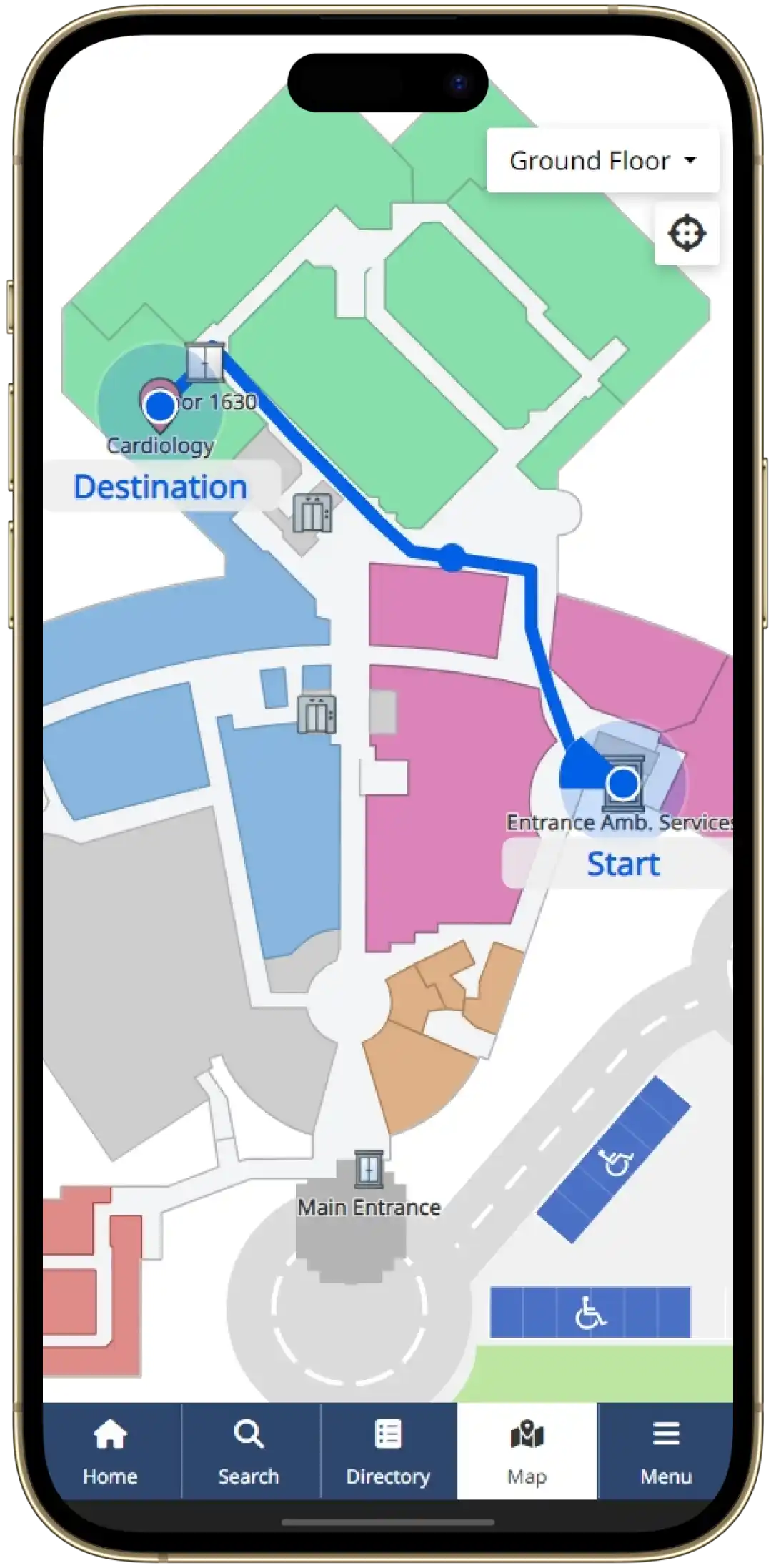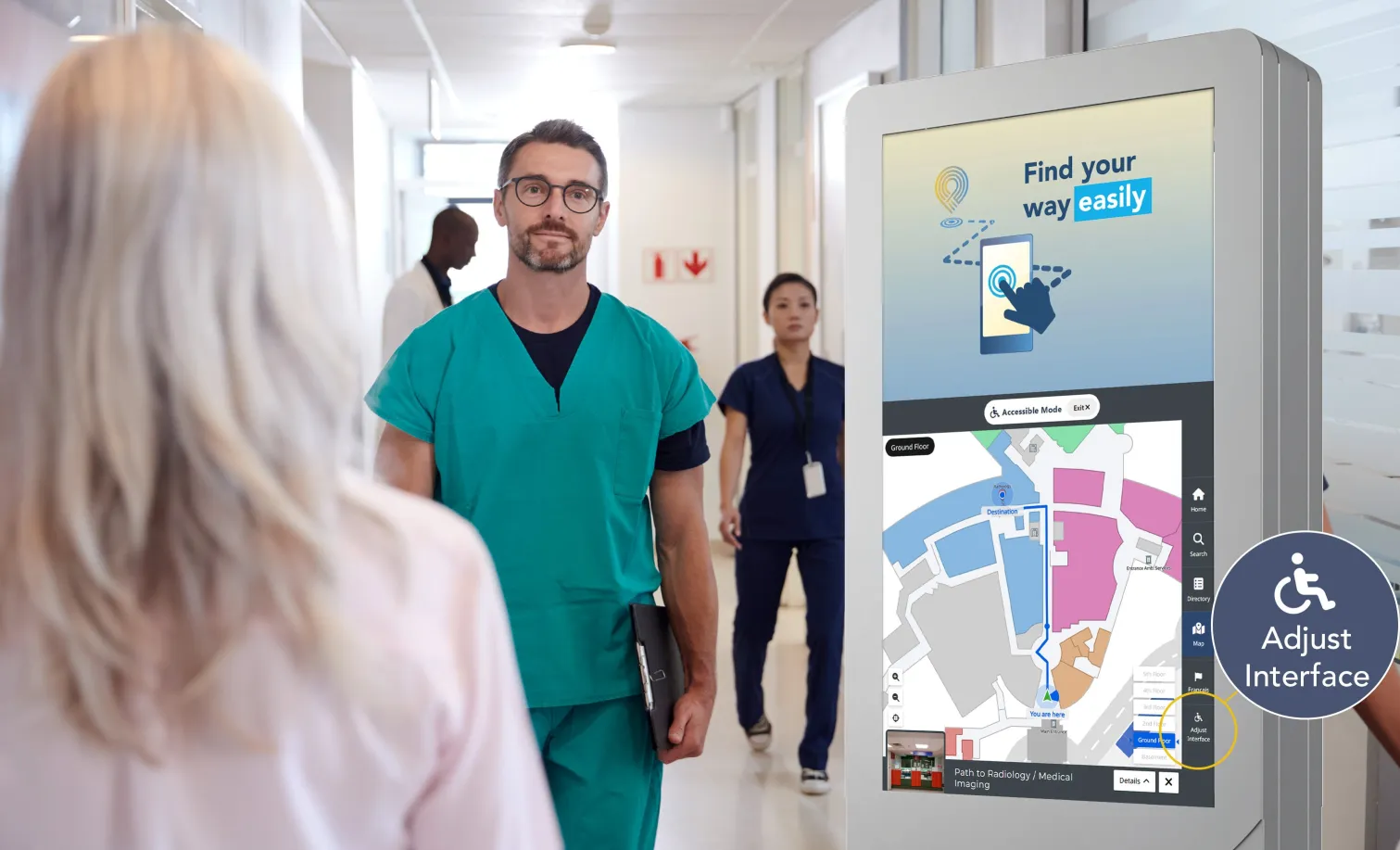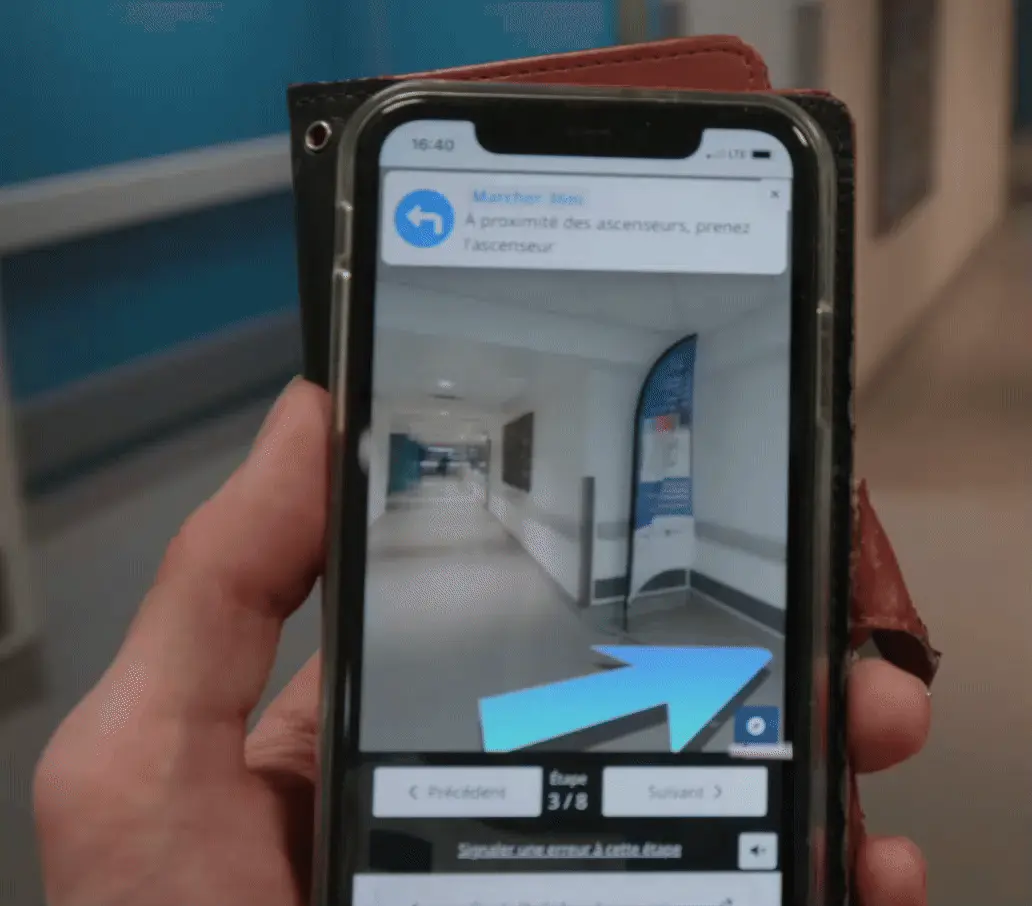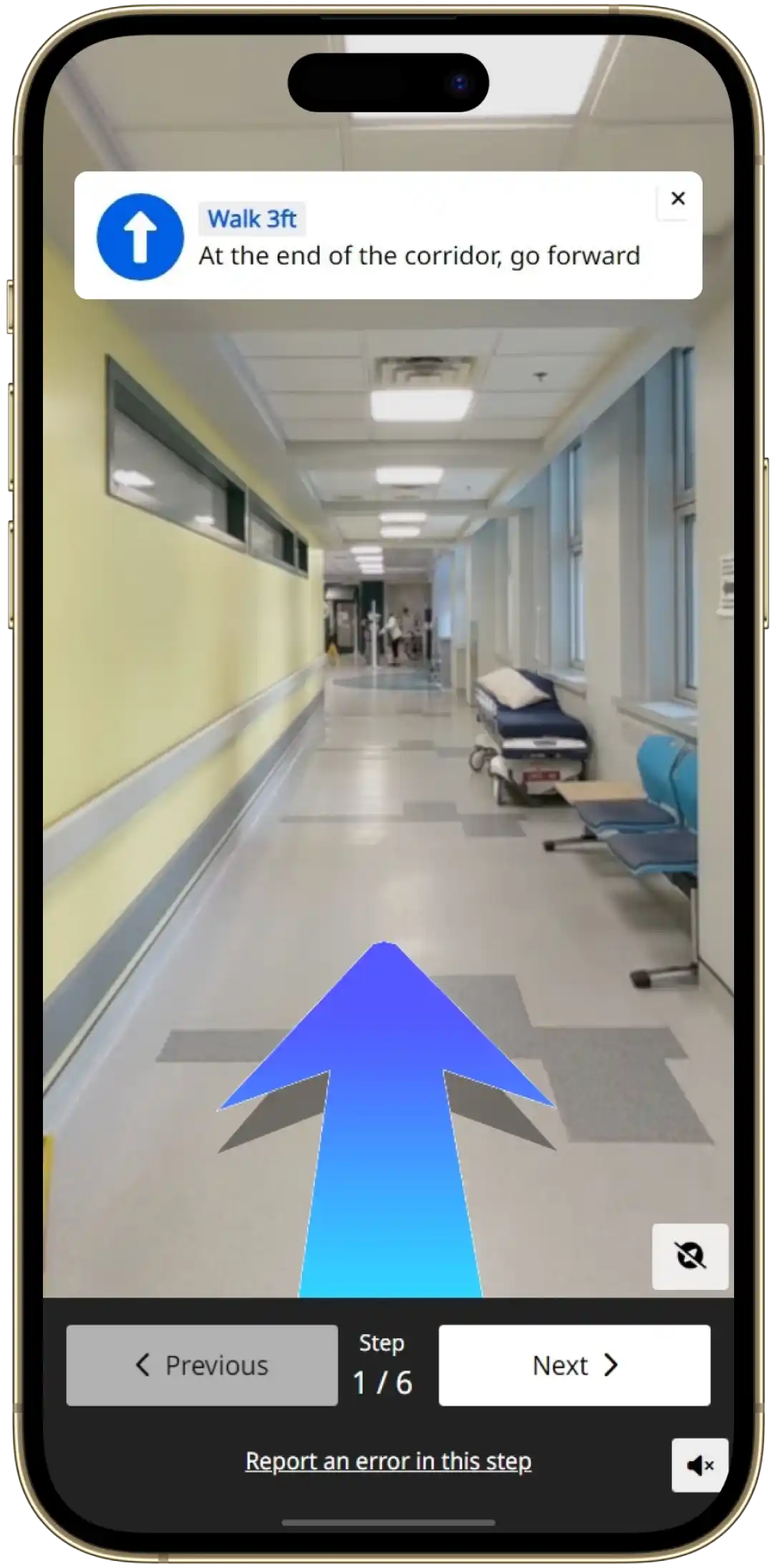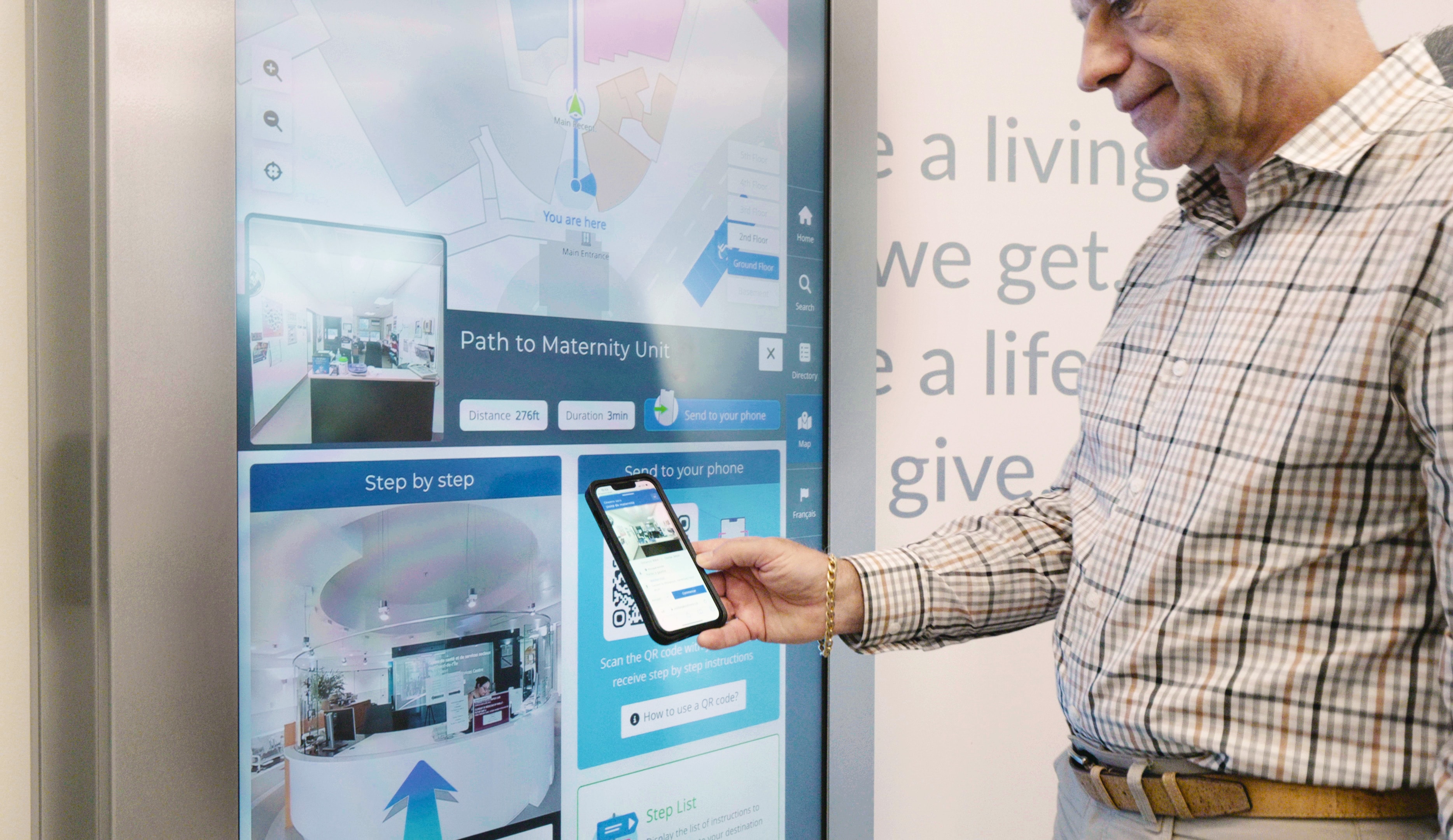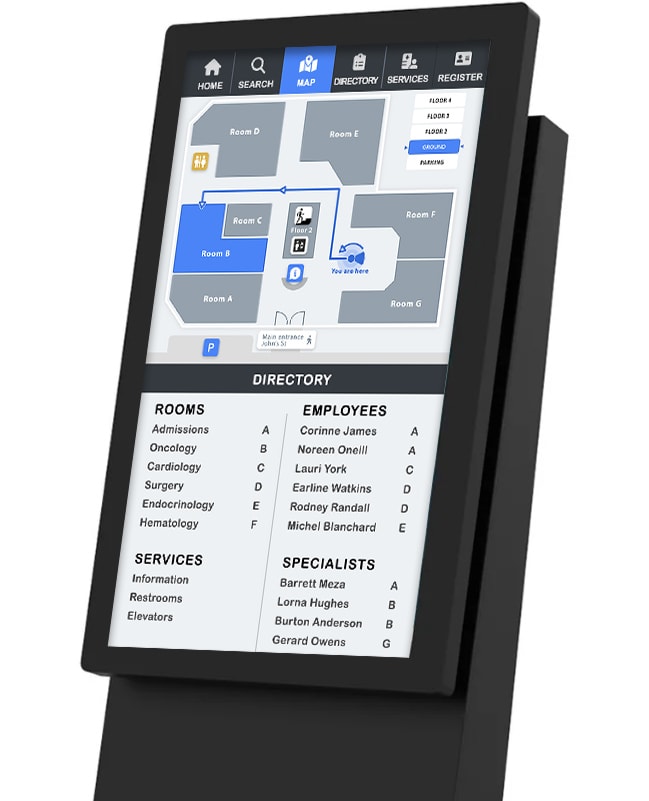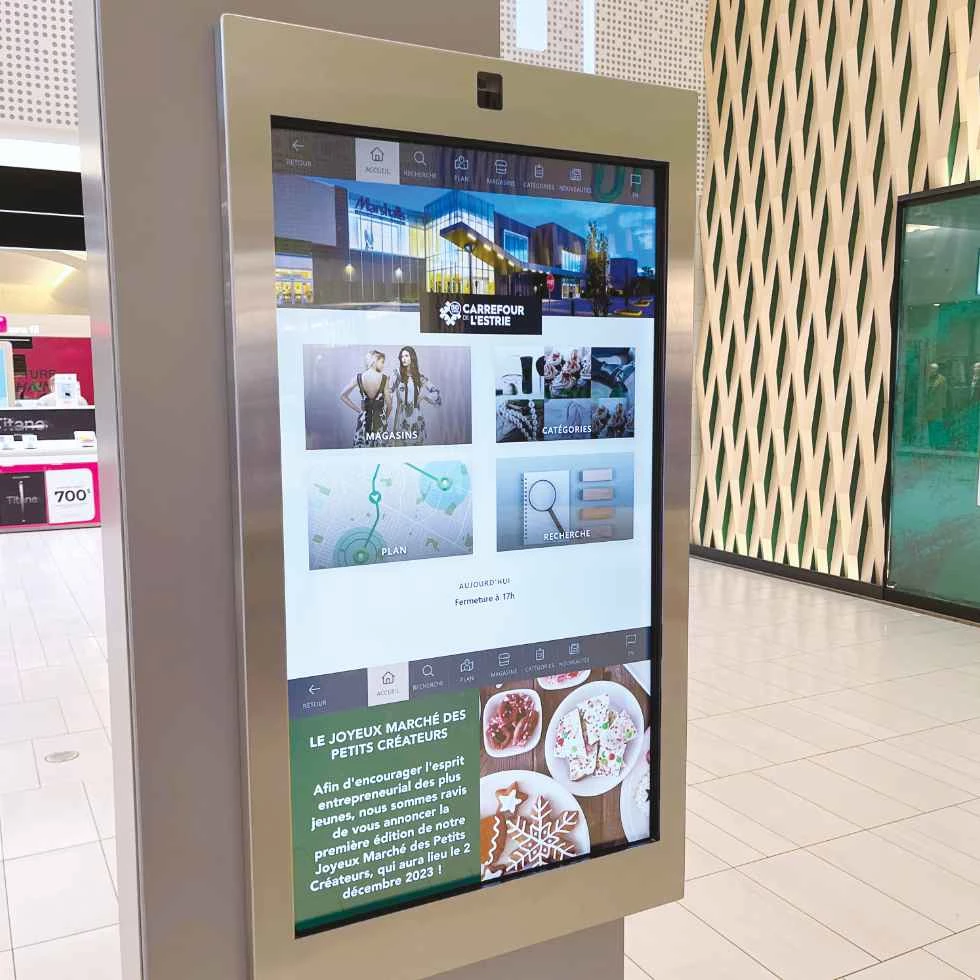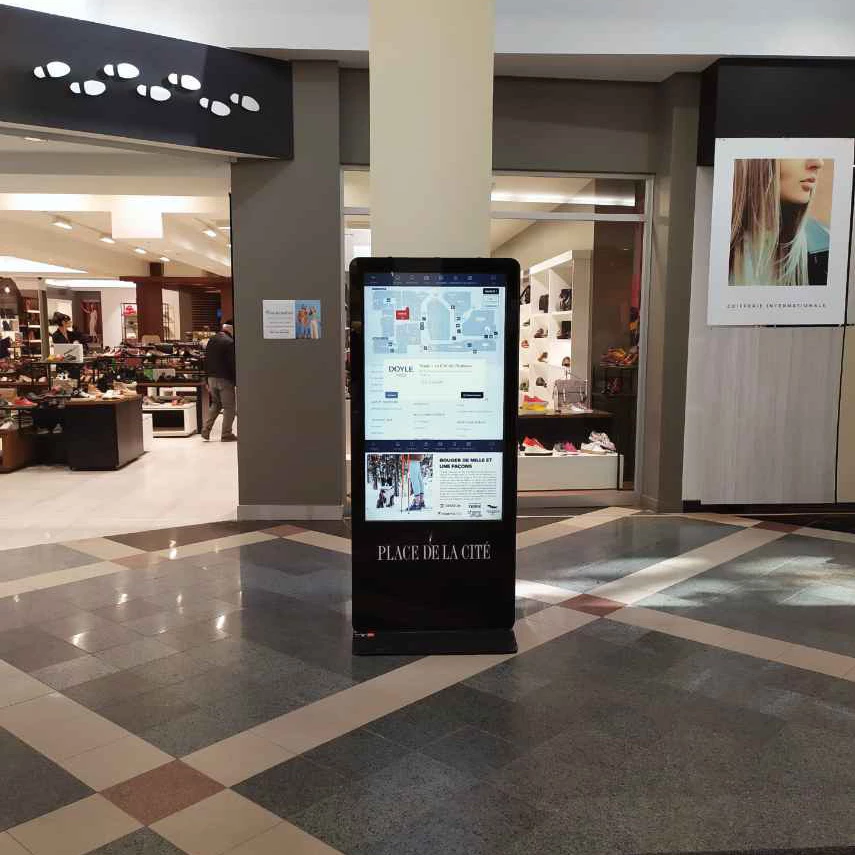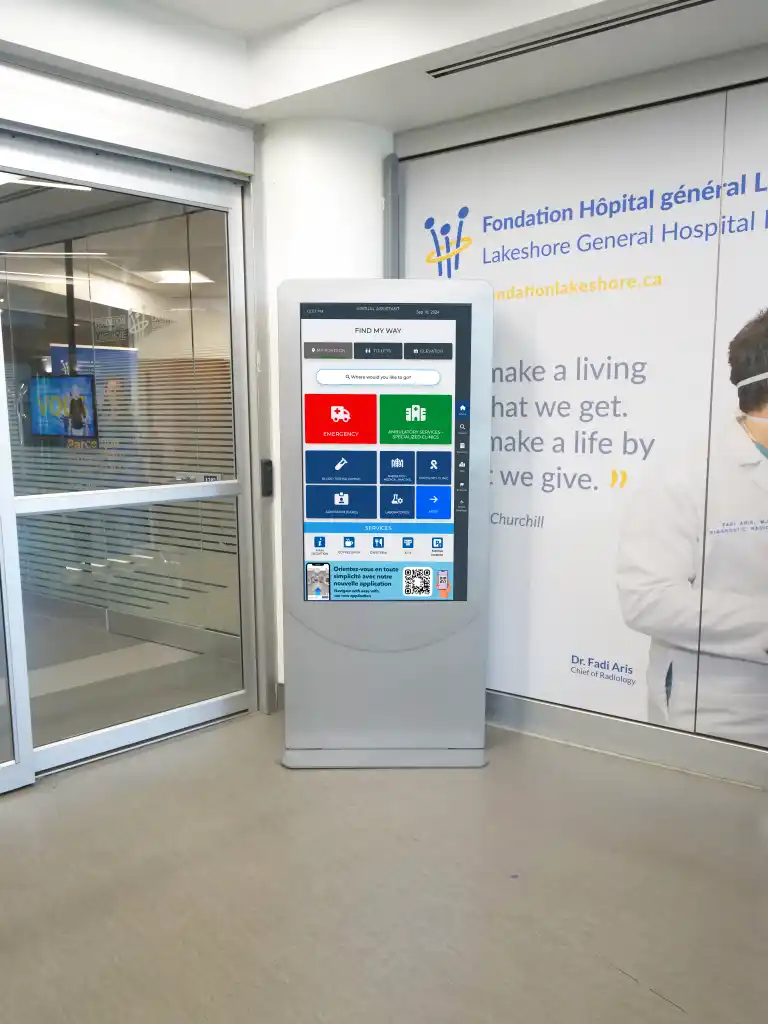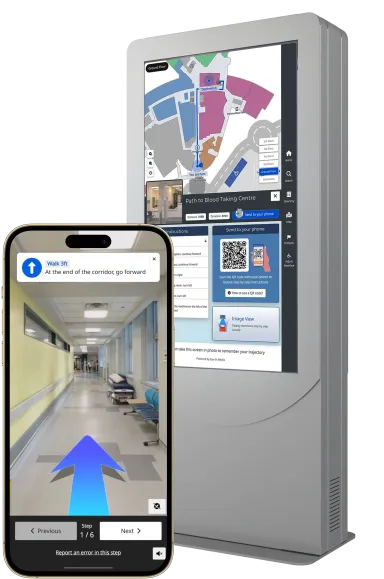Understanding wayfinding kiosks
Wayfinding kiosks are cloud-based, interactive touchscreen tools designed to assist individuals in navigating physical spaces. Their primary purpose is to help people find their way in complex environments by providing real-time, accurate information. Whether it’s a bustling airport or a sprawling university campus, these kiosks guide visitors to their desired destinations with ease. Wayfinding kiosks provide custom floor maps, building maps, campus maps, and local area maps, giving users detailed and up-to-date navigation assistance.
Effective wayfinding systems are user-friendly, easy to update, digital, interactive, accessible, and intuitive. These systems can take various forms, including wayfinding apps, signage, wayfinding signage, wayfinding digital signage, and kiosks, and are crucial in larger or more complex environments to facilitate easier navigation.
Digital wayfinding kiosks, in particular, stand out due to their interactive nature, user-friendly interfaces, and ability to provide real-time updates, making them a popular choice among interactive wayfinding kiosks, interactive digital kiosks, digital kiosks, digital signage, digital signage solutions, digital wayfinding signage, and digital wayfinding solutions.
How digital wayfinding systems work
Interactive maps in digital wayfinding systems offer users real-time navigation assistance. The technology behind these systems is robust, often incorporating 3D imaging to enhance spatial understanding and orientation in complex environments. This makes it easier for users to visualize their route and navigate through unfamiliar spaces. Additionally, augmented reality features overlay navigation instructions onto the physical environment, offering an immersive and intuitive interactive wayfinding digital interactive wayfinding experience.
User-friendly interfaces in digital wayfinding systems ensure easy access and comprehension of information. Designed to be intuitive, these systems allow even non-tech-savvy users to navigate easily. Through touch screen kiosks or mobile apps, the aim is to make navigation seamless and straightforward using digital wayfinding software.

